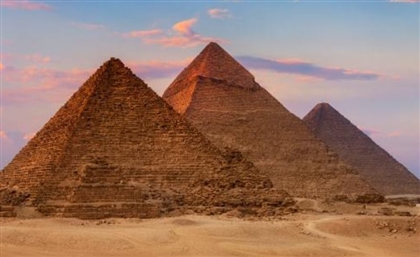Resilient Gaza: A Landscape of Resistance
This award-winning proposal by Cairo-based Design & More International shows how design can pave the way for a brighter future.

Designed by Cairo-based Design & More International, ‘Resilient Gaza: A Landscape of Resistance’ was announced as the Ethics and Values Winner of the WAFX Award in the World Architecture Festival 2024 Awards.

Despite being some of the world’s oldest inhabited landscapes, Palestine and its southern rose, Gaza, are no strangers to external control and aggression. This in itself fuels the tenacity of Palestinians. “The fact that Gaza has hosted so many cultures stands as a testament to its role as a ‘Landscape of Peace’ throughout history,” Islam El Mashtooly, Founder of Design & More International, tells SceneHome.

The ongoing genocide on Palestinians compelled the architects to consider a series of critical questions that explore what a new landscape of peace could look like in Gaza after the Israeli onslaught and war crimes are halted and - more importantly - addressed.

“We asked ourselves, how can we make Gaza self-sufficient and safe for Gazans? To improve self-sufficiency we needed to address energy, food, water, building materials and carbon,” El Mashtooly says.

Creating this ‘landscape of peace’ required the architects to think of scope. The proposal isn’t necessarily about buildings but rather processes. The vision for 'Resilient Gaza' extends beyond immediate architectural interventions. It encompasses a broader socio-economic strategy aimed at empowering Gazans, and fostering a sense of ownership and pride in their heritage.

“We see the process of rebuilding Gaza first and foremost as a process of rebuilding its landscapes and restoring the agricultural and cultural heritage of the land for Palestinians.”

The proposal kicks off with remediation, using soil bioengineering and phytoremediation of soils to restore health to denuded soils on the site and to harvest site material, including gabion wall units made from crushed rubble. On-site bamboo would be processed into engineered wooden components.

In step two, ‘Rebuilding of New Ground’, the architects propose building interconnected modules from site-harvested materials. These modules would be structurally linked and lifted off the ground to cover spaces at ground level, where bioremediation can occur.

New grounds on the roofs of the new buildings are planted with culturally significant crops like thyme, olives, sabar, cactus, Jaffna oranges and Handal plants, along with other traditional crops, thus providing a self-sustaining food source for Gazans. Additionally, PV panels are added on rooftops for solar energy, reed beads for wastewater processing, and biomason concrete products are utilised for building materials.

The final step is the enhancement and expansion of settlements with adjacent sites developed similarly with structural interconnection to provide a protected ground. “These enhancements include basement air raid shelters, facade-mounted algae biomass systems, and aquaculture tanks to ensure complete self-sufficiency,” El Mashtooly explains.

By leveraging local materials and sustainable practices, the design aims to create a blueprint for rebuilding that can be replicated in other parts of Gaza and potentially in other regions facing similar genocidal challenges.

The project's recognition at the World Architectural Festival underscores its innovative approach and the critical importance of addressing ethical and humanitarian concerns in architecture. It serves as a reminder that even in the face of adversity, thoughtful and compassionate design can pave the way for a brighter future.
Visualisation Credit: Karim Moussa El Ramly
- Previous Article Italian-Palestinian Duo No Input Debuts Eponymous Electro EP
- Next Article Travel Across History on Egypt's Most Iconic Bridges























